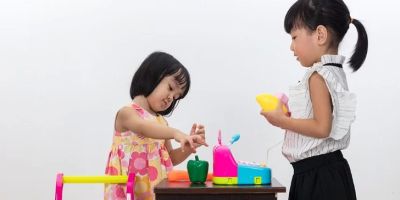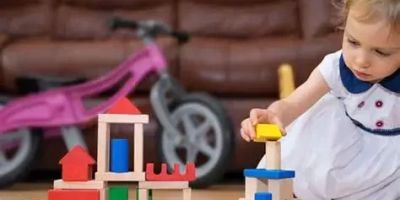Exploring the Benefits of Sensory Bins and Tactile Toys for Children
1. The Power of Sensory Play
As a parent, I’ve always been on the lookout for fun and effective ways to help my kids learn while keeping them entertained. One day, I stumbled upon the idea of sensory bins and tactile toys, and it instantly piqued my interest. At first, I wasn’t entirely sure what the fuss was all about. But after trying it, I quickly saw the magic unfold.
Sensory bins are simply containers filled with various materials like rice, sand, or water beads, along with toys or tools that engage a child's sense of touch. They provide children with an opportunity to explore different textures and objects, helping them learn in a hands-on, engaging way. Tactile toys, on the other hand, are toys designed specifically to engage a child’s sense of touch—think textured blocks, squishy toys, or toys with different materials like fabric or foam.
From a developmental perspective, sensory play is more than just fun—it's an essential part of early childhood development. Through sensory activities, children enhance their cognitive, physical, and emotional growth. The act of touching, feeling, and manipulating objects helps to build important skills, from fine motor development to problem-solving abilities.
2. Enhancing Fine Motor Skills
One of the most significant benefits of sensory bins and tactile toys is the development of fine motor skills. I noticed this firsthand when my younger child, who had been struggling with using utensils and holding a pencil properly, became more adept after just a few weeks of engaging in sensory play.
Handling small objects, like beans or buttons, inside a sensory bin strengthens the muscles in a child's hands and fingers. It’s incredible to watch as they pick up objects with tongs, pinch and squeeze playdough, or scoop sand with little shovels. These activities help improve hand-eye coordination and build strength and dexterity in their hands, which are essential for tasks like writing, dressing, and even playing musical instruments later on.
For example, while playing with a simple sensory bin filled with pasta and spoons, my child improved their ability to grip objects and refine their hand movements. Eventually, they even mastered holding a pencil properly, which had been a struggle before. These seemingly small skills lay the foundation for more complex tasks they’ll encounter later in life.
3. Stimulating Cognitive Development
Sensory play also plays a crucial role in stimulating a child's cognitive development. When children interact with various textures and objects, their brains work overtime to process what they’re experiencing. My child loved exploring a sensory bin filled with water beads and toy cars, and through the process, they learned about cause and effect as they observed how the cars moved differently on the beads compared to other surfaces.
This type of play sparks curiosity and encourages children to ask questions. It enhances their problem-solving skills as they explore how objects interact with one another. When they fill a container with rice and experiment with pouring and scooping, they learn about volume and gravity. These activities foster creativity and help children understand the world around them in a hands-on and practical way.
In my experience, the more we played with sensory bins, the more my child began to grasp complex ideas like patterns, spatial relationships, and even early math concepts such as counting and sorting. The process is natural and fun, but it’s also incredibly beneficial for their growing minds.
4. Supporting Emotional Development
Another surprising benefit I discovered with sensory bins and tactile toys is how they support emotional regulation. Children often experience big emotions—frustration, joy, anger—and sensory play provides them with a healthy outlet for expressing and processing these feelings. I saw this with my child when they used playdough to squish and shape into different forms after a frustrating day at school. It allowed them to focus on something calming and tactile while working through their emotions in a constructive way.
When children engage in sensory play, they become absorbed in the activity, which promotes mindfulness and a sense of calm. Many tactile toys, like fidget spinners or squishy balls, can help children manage anxiety and stress. It gives them a moment to ground themselves, especially in a world that can often be overwhelming with sensory overload.
On many occasions, I’ve found that after a tough emotional moment, my child could regulate their mood better through sensory activities. The rhythmic actions of squeezing, molding, or arranging objects seemed to have a calming effect, helping them regain composure and focus.
5. Sensory Play as a Tool for Social Interaction
As kids grow, their social skills evolve through play. Sensory bins and tactile toys are excellent tools for encouraging interaction between children. I’ve witnessed how my children—when playing together with a sensory bin—work together to build structures, share toys, and even collaborate on sorting activities. These shared experiences help foster teamwork and communication skills in a relaxed, enjoyable environment.
When my children play with sensory toys, they engage in conversations about textures, colors, and patterns, which in turn enhances their language skills. They talk about the different ways they can use the materials, negotiate who gets what item, and work out problems together—sometimes all while creating imaginary scenarios. It's not just about the toys themselves but about how they use these objects to connect with one another and build relationships.
This collaborative form of play encourages empathy and understanding, which are essential social skills. In a group setting, children learn to take turns, cooperate, and communicate more effectively—all of which are important life skills.
6. A Fun and Relaxing Way to Learn
What I love most about sensory bins and tactile toys is how they make learning fun. The playful nature of sensory activities helps children learn without even realizing it. It’s easy for kids to get excited about exploring different textures, colors, and shapes. I’ve seen how sensory bins bring a sense of adventure into learning, keeping my kids engaged for hours while enhancing their developmental skills.
Whether it’s playing with colored rice, finding hidden objects, or creating patterns in a sand tray, sensory play becomes an engaging and relaxing experience that combines education with fun. And for parents, it’s a rewarding feeling to see their children thriving in such an enjoyable and educational activity.
In conclusion, sensory bins and tactile toys are not only delightful for children, but they also offer numerous developmental benefits. From improving fine motor skills to enhancing cognitive abilities and emotional well-being, these activities provide an all-encompassing learning experience. If you’re looking for the best toys to get started, I highly recommend checking out Knight Toys for a wide variety of sensory and tactile toys that will surely make your child’s playtime even more exciting and enriching.





